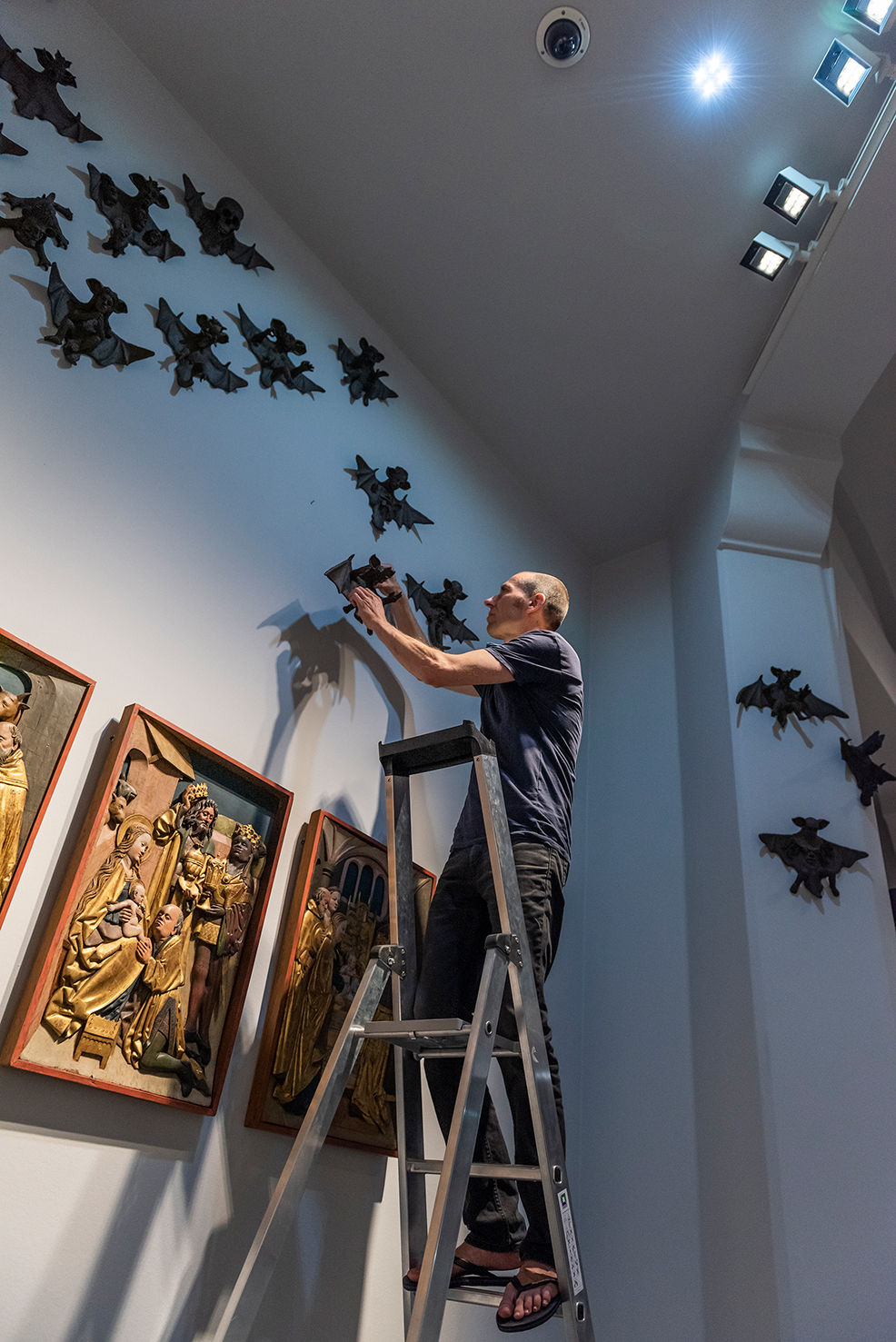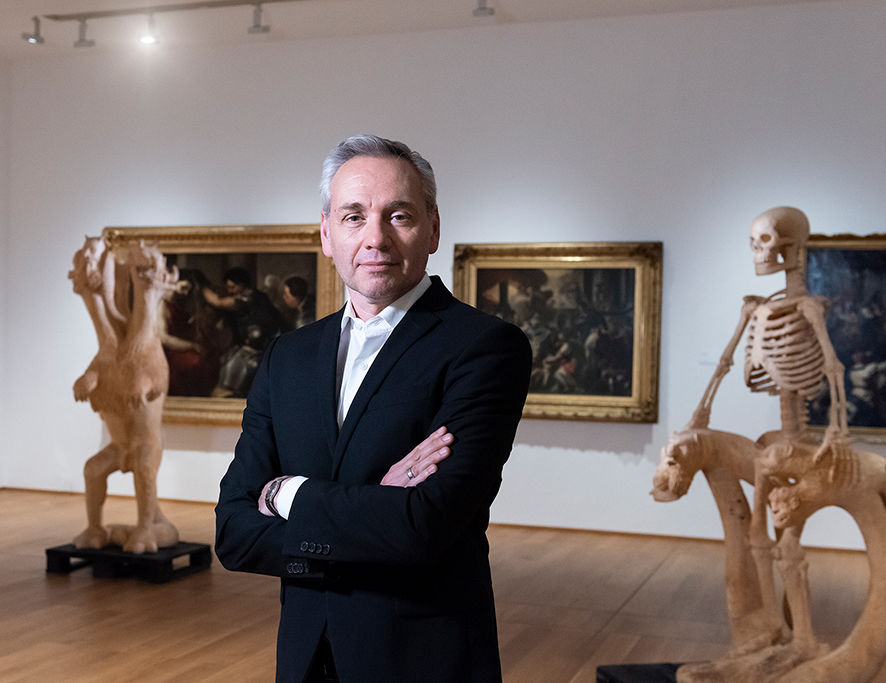‘Bats and Saints’, the series of ceramics currently on display in the Kirchensaal, depicts a multitude of chimerical chiropteran beings that conjure up associations of night-time. © Jan Thomas. Photo: Museum Wiesbaden / Bernd Fickert.
Museum Wiesbaden’s Kirchensaal, opened in 1915, was designed by its architect, Theodor Fischer, as a self-contained space intended to restore to the medieval sculptures displayed there something of their original sacred aura.
But what has happened now? A dark swarm of strange beings, mostly bat-like creatures, crouch in corners or whirr around the sculptures, singly or in groups.

At one stroke, Jan Thomas’s ‘Bats and Saints’ (2018–2020) has succeeded in completely altering the impression created by the room. The ceramics, almost 50 in number, really raise the temperature and set off a feeling of nervous excitement. Once you’ve got over the initial shock, a surprising effect sets in: your gaze wanders almost protectively over the medieval sculptures and settles on the 12th-century Walsdorf crucifix.
As if by a miracle, Christ seems to be the only figure untouched by the invasion of these grotesque creatures. John the Baptist (Middle Rhine, around 1500) seems to be more of a target, however. With his unstable stance, tensely contracted eyebrows, gesturing hand, and open mouth, he seems to have already been in the grip of some unease, even while announcing the coming salvation of Christ.
In both form and content, the sculptures and ceramics interact, and this is an important reason why the initially disturbing impression begins to change: wait a little and a completely different perspective slowly reveals itself. After a while, the creatures fit harmoniously into the context of the room and become real companions for the holy figures: bats and saints!

This army of chiropteran intruders visualizes, in a most haunting way, the deep religiosity of the Middle Ages. Romanesque and Gothic churches, in particular, are famous for the sculptures on their capitals and exteriors, often decorated with demons and animal faces, creatures from fables and from hell. Often these figures were not simply obscene and sexually charged, they were intended to ward off evil spirits and prevent them from entering the sacred space. The more fearsome the appearance of these fantasy creatures – so the idea went – the greater the protection they afforded.
In our present context, the situation is quite different. Jan Thomas’s creatures are free-flying and have managed to reach the holy figures up close, surrounding them, almost crowning them in some cases. Seen in this light, one can interpret the intervention in the Kirchensaal as somehow being true to the medieval tradition.
Heaven and Hell
As well as medieval sculptures, there are numerous medieval religious paintings whose depictions engage with the Christian narrative of salvation. The theological content visualized by the artists of these works can also be related to Jan Thomas’s ceramics: a total of five hairy human-animal hybrid creatures in various shapes and sizes are enthroned here on palettes and wooden plinths like messengers from hell, here to teach the viewer about fear and the inner abyss. Thanks to the soft, untreated poplar wood, however, they impart – despite this drastic message – a feeling of lightness and warmth. Jan Thomas succeeds in creating a panopticon of our nightmares but, fortunately, also doesn’t forget to wake us up in time.

Dr. Peter Forster
Translated by Lance Anderson